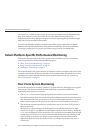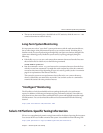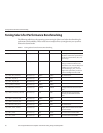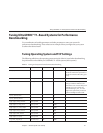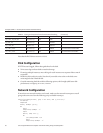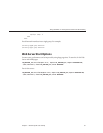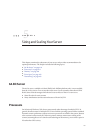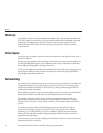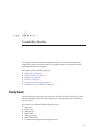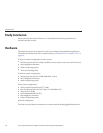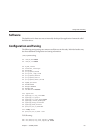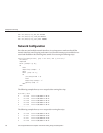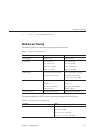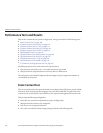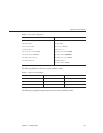
Memory
As a baseline, Web Server requires 64 MB RAM. Multiple CPUs require at least 64 MB for each
CPU. For example, if you have four CPUs, you should install at least 256 MB RAM for optimal
performance. For high numbers of peak concurrent users, also allow extra RAM for the
additional threads. After the rst 50 concurrent users, add an extra 512 KB for each peak
concurrent user.
Drive Space
You need to have enough drive space for your OS, document tree, and log les. In most cases, 2
GB total is sucient.
Put the OS, swap/paging le, Web Server logs, and document tree each on separate hard drives.
If your log les ll up the log drive, your OS does not suer. Also, you’ll be able to tell whether,
for example, the OS paging le is causing drive activity.
Your OS vendor might have specic recommendations for how much swap or paging space you
should allocate. Based on testing, Web Server performs best with swap space equal to RAM,
plus enough to map the document tree.
Networking
For an Internet site, decide how many peak concurrent users you need the server to handle, and
multiply that number of users by the average request size on your site. Your average request
might include multiple documents. If you’re not sure, try using your home page and all of its
associated subframes and graphics.
Next decide how long the average user will be willing to wait for a document, at peak utilization.
Divide by that number of seconds. That’s the WAN bandwidth your server needs.
For example, to support a peak of 50 users with an average document size of 24 KB, and
transferring each document in an average of 5 seconds, 240 KBs (1920 Kbit/s) are needed.
Therefore, our site needs two T1 lines (each 1544 Kbit/s). This also allows some overhead for
growth.
Your server’s network interface card should support more than the WAN to which it’s
connected. For example, if you have up to three T1 lines, you can get by with a 10BaseT
interface. Up to a T3 line (45 Mbit/s), you can use 100BaseT. But if you have more than 50
Mbit/s of WAN bandwidth, consider conguring multiple 100BaseT interfaces, or look at
Gigabit Ethernet technology.
For an intranet site, your network is unlikely to be a bottleneck. However, you can use the same
calculations as above to verify this.
Memory
SunJavaSystemWebServer7.0Update1 PerformanceTuning,Sizing,and ScalingGuide •102



